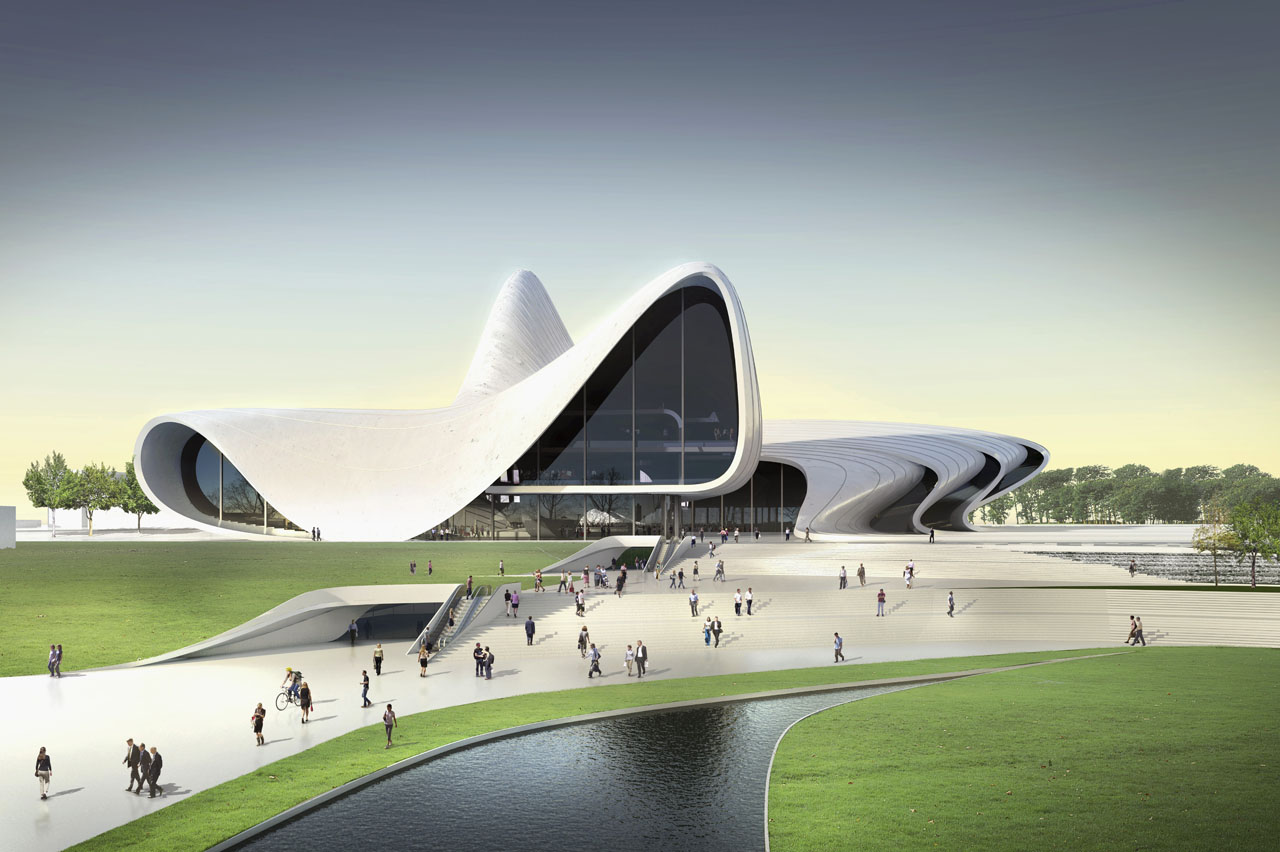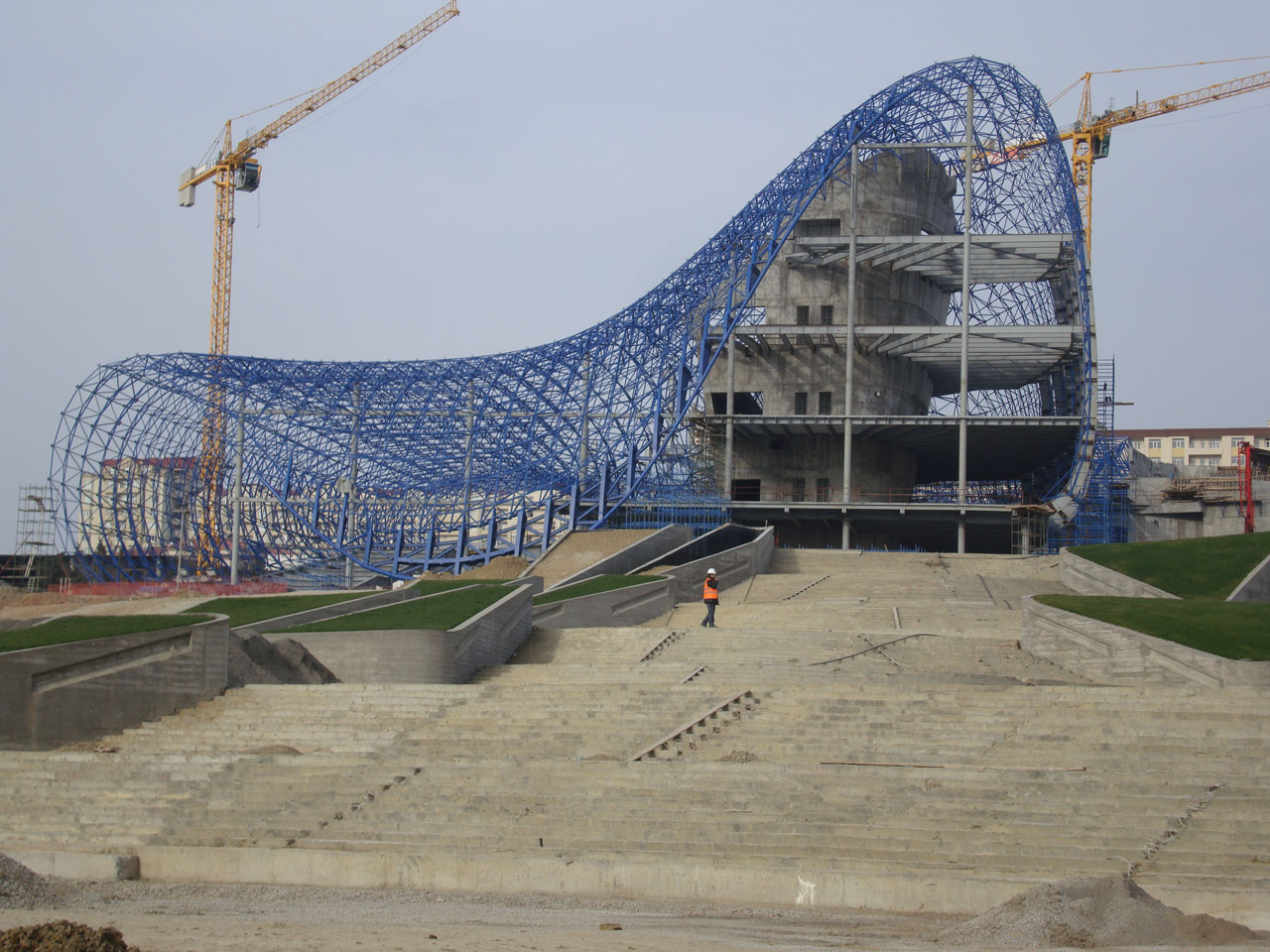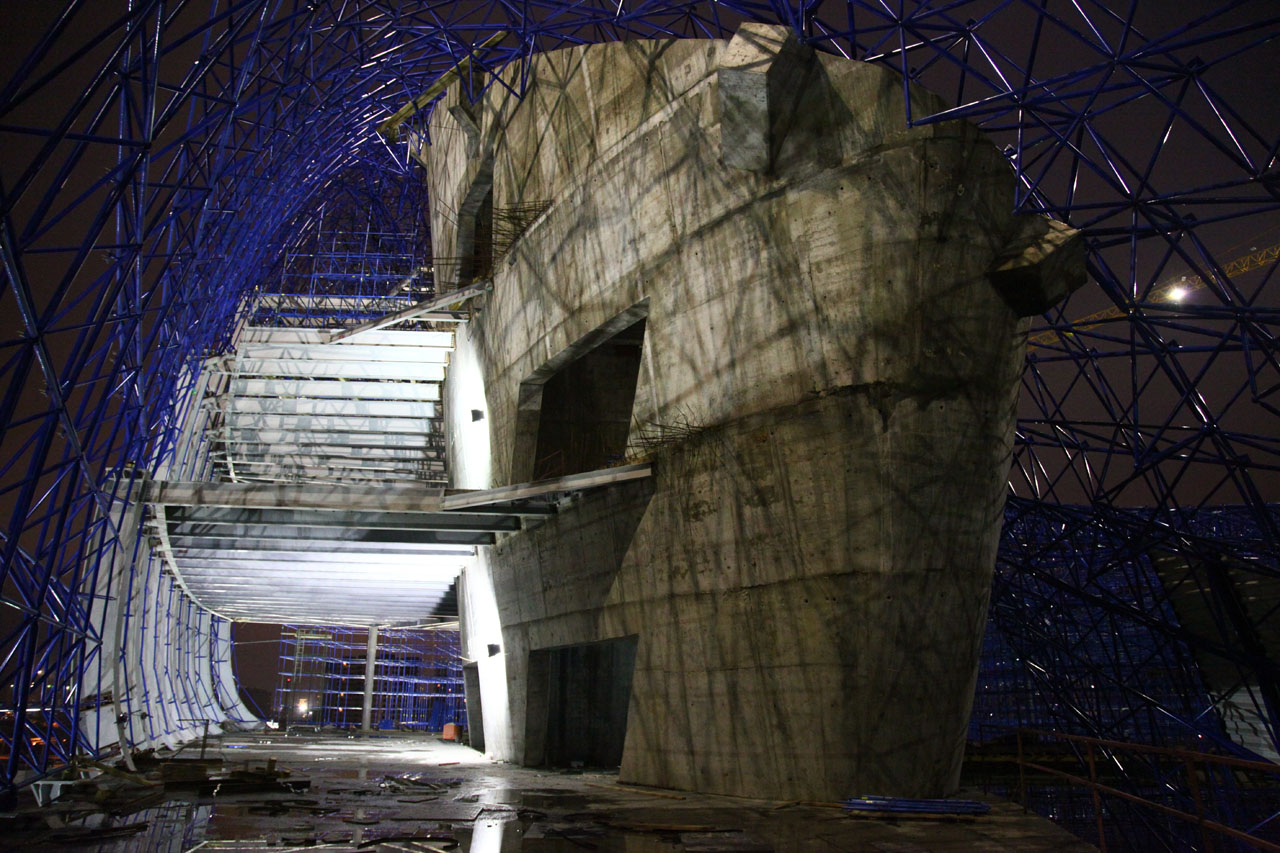Reigniting Baku: HOK's Flame Towers
Boundary-stretching architecture is helping the once oppressed city of Baku, Azerbaijan, reinvent itself. DIA Holding has several major building projects underway; in addition to the high-profile Heydar Aliyev Cultural Centre by Zaha Hadid Architects, the company is responsible for the Flame Towers project, designed by HOK.
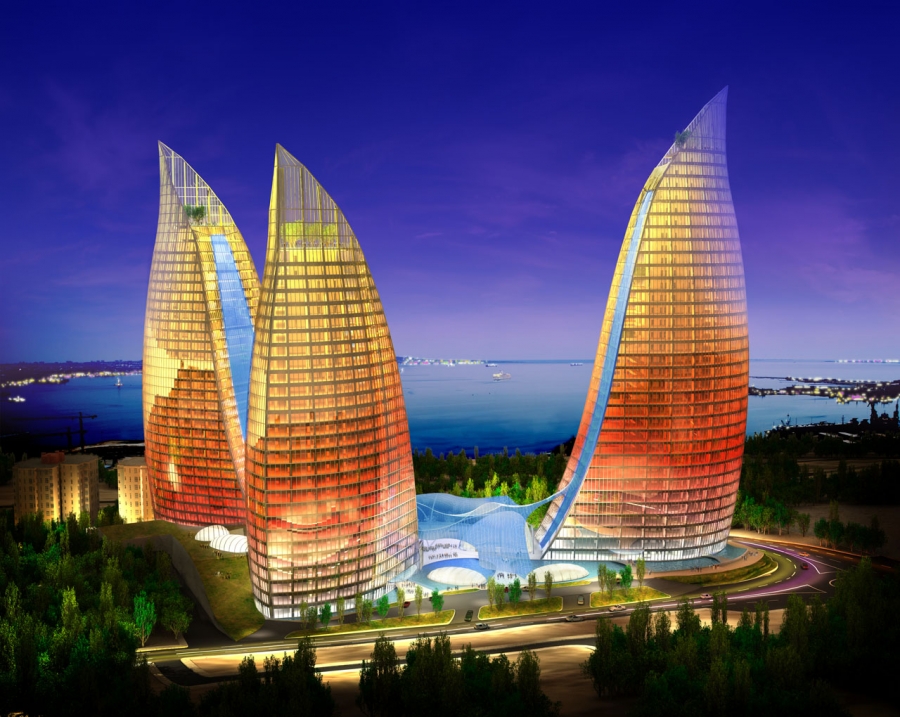
The Flame Towers are so named because of their shape, which is intended to evoke “the momentary flicker of a flame,” according to Barry Hughes, Head of Mixed Use at HOK London. Hughes explains, “Baku is known as the ‘region of eternal fires,' and Azerbaijan’s long history of fire worship provided the inspiration for HOK’s iconic design.” Renderings of the building emphasize the orange glow that will emanate from the glazed towers at night.
Video courtesy of AOL 5min | Ayna
The southernmost tower – the tallest of the three – is residential, and will contain 130 luxury apartments over 39 floors. The northernmost tower will house a hotel providing 250 rooms and 61 serviced apartments. Occupying the western side of the site is an office tower that will provide over 33,000 m2 (approximately 355,200 sq. ft.) of flexible commercial office space.
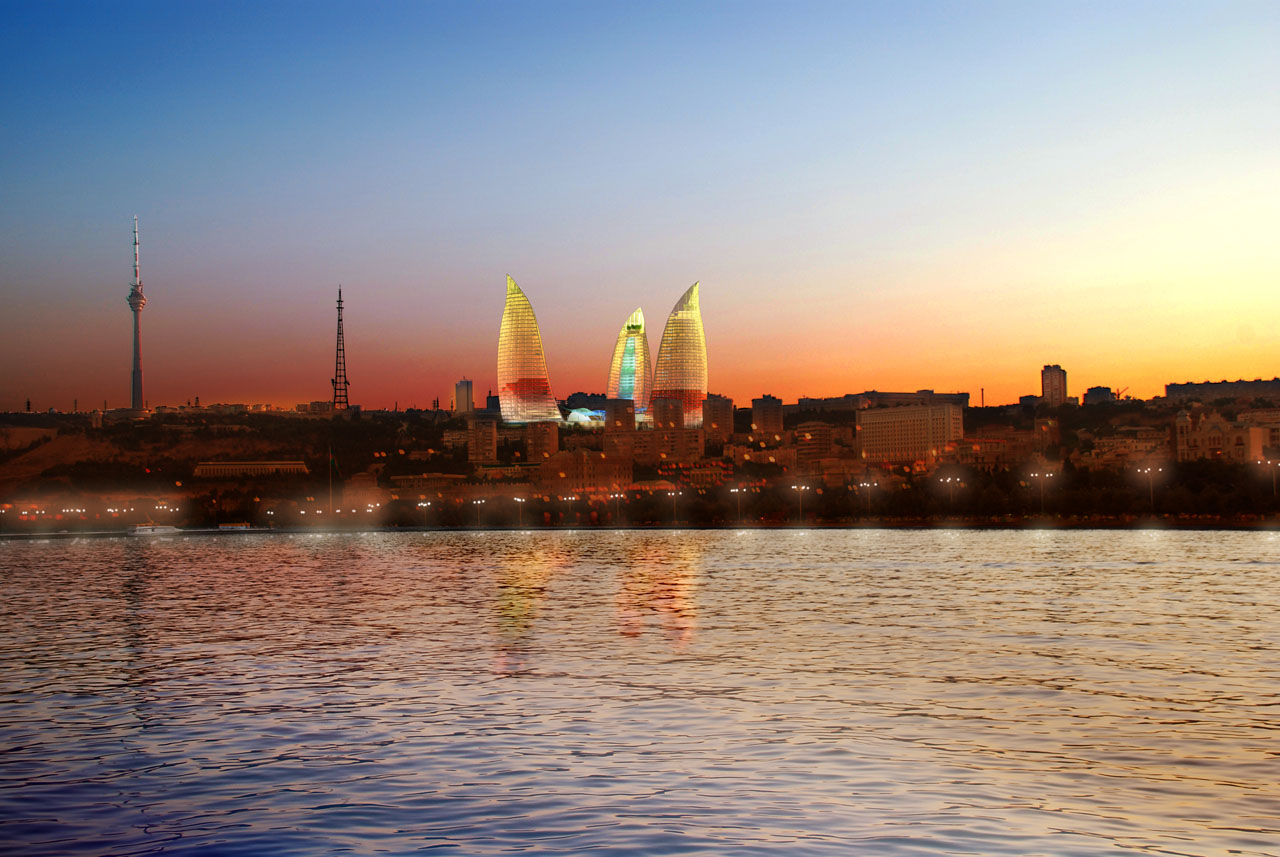
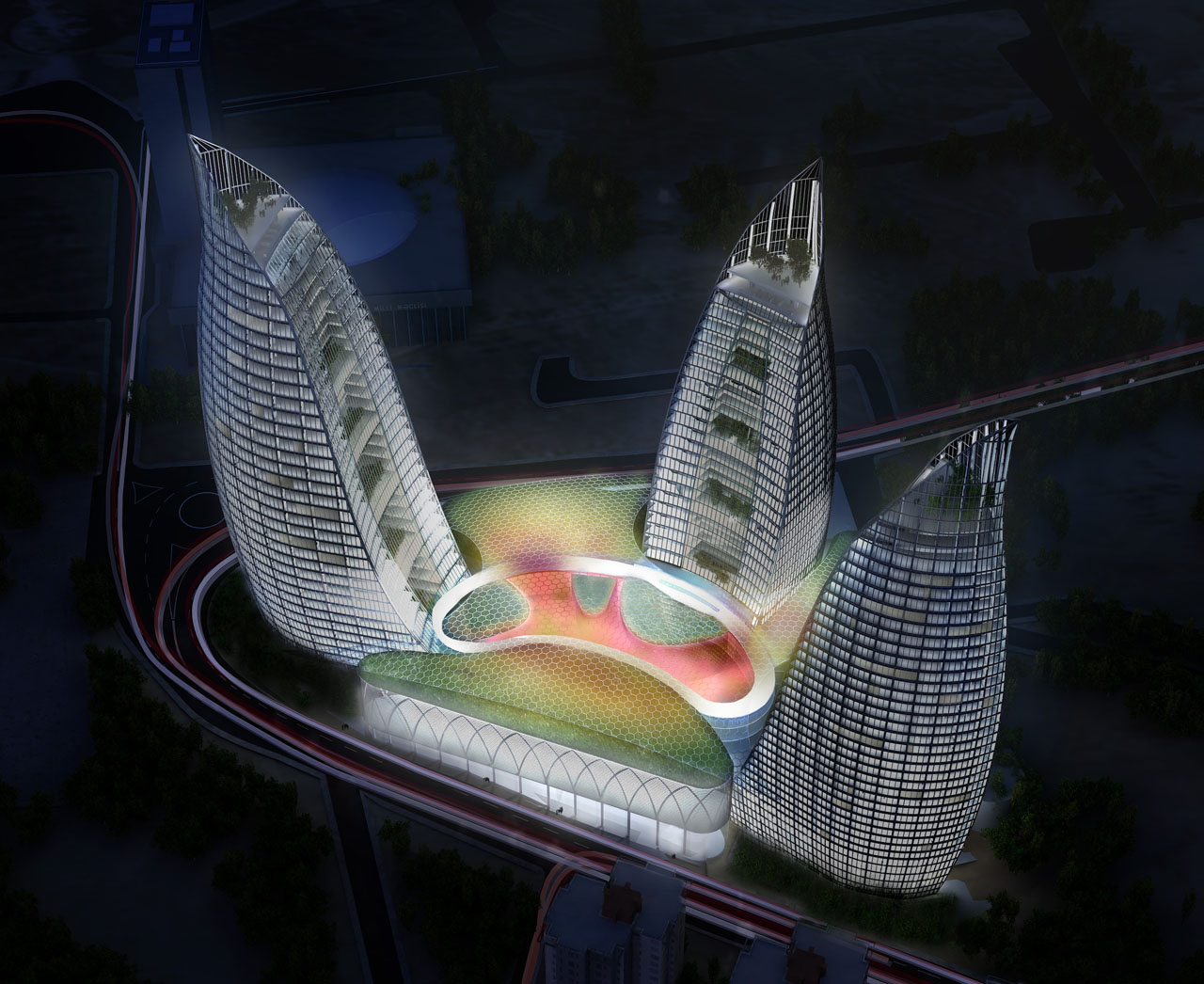
The Flame Towers are sited on a steep hill by the Caspian Sea. To respond to the prominent hillside site, Hughes says, “The team designed a hierarchy of buildings from the tall towers down to a number of smaller, discreet structures [which] form the retail and leisure pavilions, mediating between the scale of the towers and their surroundings.” Two of Baku’s main streets provide gateways into the complex; each leads to the central atrium, which includes three levels of leisure facilities such as shops, restaurants, and a cinema. “Where the towers and pavilions meet, gaps in the framework allow the surroundings to be drawn inside, the landscape of the street merging with the interior to create a fluid boundary between inside and outside space,” notes Hughes.
Engineering the Vision
Werner Sobek, the firm that provided facade engineering for the ambitious Heydar Aliyev Cultural Centre, also provided design and engineering consulting for the Flame Tower facades and for the various special structures.
Any building in Baku must be designed to withstand severe storms as well as earthquakes. The city is known for its windy conditions, and the Flame Towers are especially susceptible to high wind loads because of their hilltop location. Adding another layer of complexity to the construction process, materials must be imported from remote locations, requiring a high degree of coordination. Perhaps most significantly, however, the free-form configuration of the structures necessitates the kind of tailored and creative engineering solutions that have become associated with contemporary architecture. According to Thomas Winterstetter, project engineer with Werner Sobek, “The amorphous architecture has been 'tamed' by us engineers, not sacrificing anything regarding design intent but introducing strategies to make it feasible to implement it in such a remote country.”
“The amorphous architecture has been 'tamed' by us engineers, not sacrificing anything regarding design intent but introducing strategies to make it feasible to implement it in such a remote country.” Thomas Winterstetter, Werner Sobek
For example, for the engineering of the glass facade, Winterstetter explains that the shape of the towers was optimized by Werner Sobek’s 3D engineering team to facilitate production of flat facade panels in varying trapezoidal shapes. “This was a demanding exercise. If this wouldn't have happened, either curved glass or triangularized panels would have been needed, which would have been very difficult and costly – and ugly, in case of triangles. So the tower walls are 'faceted,' because the shape of the towers appears to be freeform but is optimized to be clad with the flat panels.” Winterstetter further points out that the irregular shape of the structure, and its changes from one floor level to another, made the production of drawings – from floorplans to formwork drawings – more labor-intensive.
Structural support for the curved tower facades is mainly provided by concrete slab edges, augmented by the special structures of the wintergardens (located at the base of the hotel tower). At the top of each tower, the curve of the structure inverts to form a "flick"; constructing the flicks involved designing 30 m (approximately 98') high structures of conventional steel welded box and architecturally exposed steel sections.
Construction is expected to be complete by the end of 2011. Some features of the project have entered a redesign stage; a free-flowing canopy at the podium level, which appeared in early renderings, has been replaced by several free-standing skylights. Cladding material selection for lower-level structures has also not been finalized, although milled Baku sandstone is being considered, as are some metal alternatives.
When complete, the Flame Towers will provide another architectural jewel to enhance Baku’s already rich skyline. With their overt reference to fire, the emblematic towers will help to marry the country’s modern aspirations to its history.

Kristin Dispenza
Kristin graduated from The Ohio State University in 1988 with a B.S. in architecture and a minor in English literature. Afterward, she moved to Seattle, Washington, and began to work as a freelance design journalist, having regular assignments with Seattle’s Daily Journal of Commerce.
After returning to Ohio in 1995, her freelance activities expanded to include writing for trade publications and websites, as well as other forms of electronic media. In 2011, Kristin became the managing editor for Buildipedia.com.
Kristin has been a features writer for Buildipedia.com since January 2010. Some of her articles include:

